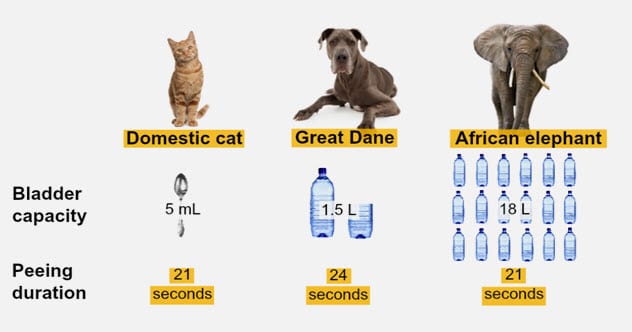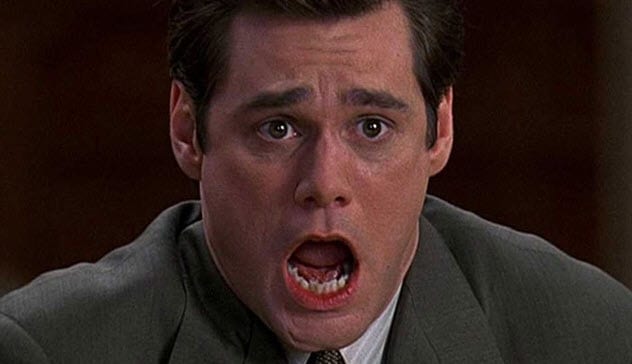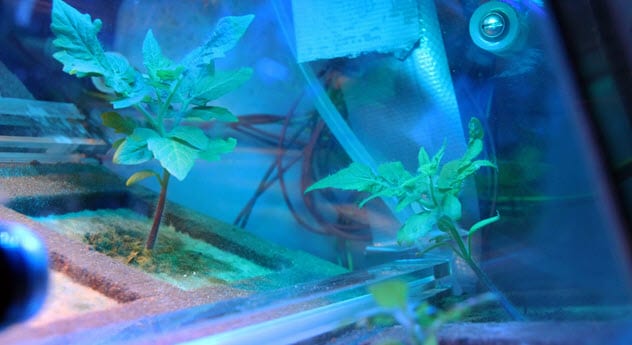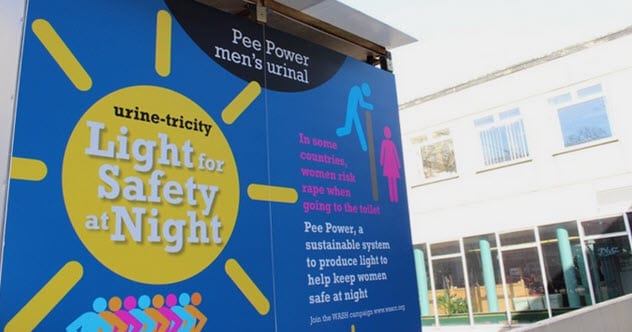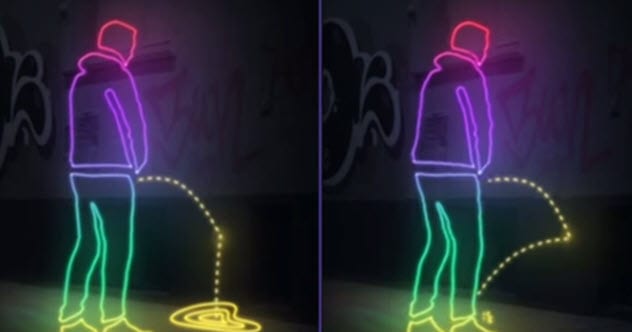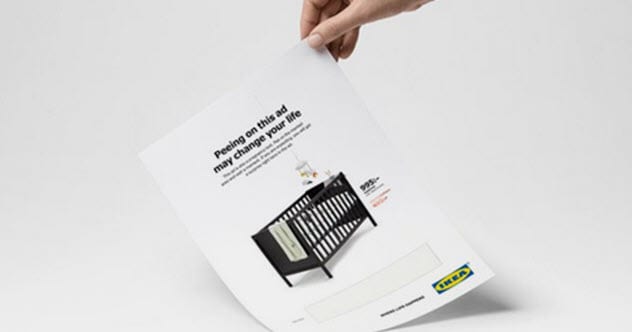The fluid is also central to several weird moments and studies. From walls that nobody wants to urinate against to advertisements that readers can pee on, our bladder brew is far from boring.
10 The Pool Pee Test
People like to pee in swimming pools. Unfortunately, chemicals in urine react to compounds in the water and form by-products that can be harmful. There is no effective way to know how much urine visitors deposit in your pool with a straight face. However, in 2017, toxicologists from Alberta found a way to track some of it. First, the team needed a chemical excreted by urine that did not change within the body or water. They chose an artificial sweetener called acesulfame potassium, a packaged foods mainstay. The study scooped water from 22 swimming pools and eight hot tubs from two Canadian cities. It also collected tap water, which had been used to fill the pools and tubs. The concentration of the sweetener was up to 571 times greater in the pools and tubs than in the tap water. Based on the levels of acesulfame potassium, the pools contained 30–75 liters (7.9–19.8 gal) of urine depending on their size.[1]
9 The Urine Database
Pee is a chemical wonderland. In 2013, after seven years of investigating the chemical composition of urine, scientists finally had the full picture. As it turned out, human whiz holds a staggering amount of chemicals. The team logged over 3,000 compounds and published an online database for anyone interested in the unusual encyclopedia. Bacteria brewed the least, around 72 chemicals. The body produced 1,453, but the most—around 2,282—came from outside influences. Their composition came from drugs, diet, cosmetics, and environmental exposure. Together, the compounds represented 230 different chemical classes.[2] The total tally and variety surprised even the scientists. The study also identified over 480 chemicals unique to urine, which dispelled the belief that blood was the better option for analyzing a patient’s chemical profile.
8 The 21-Second Rule
In 2014, researchers timed how long it took for mammals to urinate. The team stared at animals at Zoo Atlanta and watched YouTube videos. Incredibly, any mammal bigger than a rat took roughly 21 seconds to urinate. The size of the animal made no difference. Cats to elephants all peed within the same time frame even though elephants dump around 18 liters (4.8 gal) of urine while cats tinkle about a teaspoon’s worth. The unexpected discovery made sense when researchers looked at the urethra, a tube that carries urine from the bladder to the bathroom. In another unexpected twist, the tube kept a length-to-width ratio of 18 in all mammals and this caused the strange time rule. What fascinated engineers was that volume did not matter and that the pressure pushing the pee forward increased with a longer urethra. There is no reason why the phenomenon cannot one day be applied to large artificial water systems.[3]
7 Full Bladders Create Better Lies
Fibs and bladders are secret friends. As it turns out, people holding in their pee make more convincing liars. During a 2015 study, 22 volunteers were either given a small or large amount of fluid to drink. They were asked to wait for almost an hour. The group then completed a survey and spoke to a panel. By then, some already longed for the bathroom. The panel questioned the volunteers about moral and social issues. The participants had to lie and argue for viewpoints entirely different than their own. Interestingly, those with ballooning bladders told epic lies. They were more convincing, came up with more elaborate details, and appeared more truthful. The latter, researchers believe, could be tied to the self-control we need when suppressing an overwhelming urge to pee. The theory suggests that the brain’s cognitive regions are not truly separate. The so-called “inhibitory spillover effect” (ISE) starts with intense control in one area (suppressing the bladder) which then spills over into another (better lying).[4]
6 Pee Bales
Wimpole Hall is a National Trust property in Cambridgeshire. A group of people caring for Wimpole decided to go greener. In an effort to save water and make compost, male workers are encouraged to urinate on straw bales. Women need not feel left out. One suggestion mentioned doing business in a bottle and then tipping it out onto the straw stacks. It might sound weird, but there is a method to the madness. The straw is destined for the compost heap, and the pee is an excellent pretreatment. Urine is a known compost “activator” that is packed with nitrogen. The initiative also saves water because Wimpole’s loos are flushed less often. The whole thing comes with a big caveat, however. Workers only pee on the bales, which line the walled gardens, when visiting hours are over. One staff member aptly explained, “We don’t want to scare the public.”[5]
5 Space Fertilizer
Mankind’s dream of colonizing Mars includes urine-fueled food. The Red Planet is too distant for deliveries from Earth. If Mars is going to become a successful territory, it needs its own vegetable garden. The German Aerospace Center (DLR) is apparently having some success with tomato plants and a tank of human urine. The recycling of bodily fluids is nothing new. Astronauts already donate their sweat and urine to a recycling system on board the International Space Station. But to sprout a Martian harvest requires an Earthlike biological system that includes fluids, microbes, and oxygen. One of the experiments saw pumice stones placed in urine. The porous volcanic rocks contain bacteria that flourished in the urine and turned the pee’s ammonia into fertilizer elements such as nitrites and nitrate salts.[6] Ultimately, the scientists plan on using greenhouses aboard satellites to simulate Martian gravity and see if bacteria in synthetic urine can fertilize tomatoes.
4 Urination Electrocution
In 2013, Matthew Zeno left a bar in the early hours of the morning. When nature called, he decided to find relief at the G-train subway line. He reportedly died after tinkling on the electrified rail and electrocuting himself in the process. Years prior, Joseph Patrick O’Malley had undergone an autopsy after being struck by a train. Electrical burns on his privates, thumb, and forefinger suggested that 600 volts had traveled up O’Malley’s urine stream and electrocuted him after he peed on the rail. He was probably dead before the train arrived. The television program MythBusters bravely decided to test the plausibility of such cases. They found that peeing on railway lines would rarely result in electrocution because the urine stream tends to separate into drops. This should prevent a current from traveling up the stream.[7] However, they found that peeing against an electric fence was asking for trouble. As the fence is higher up, there is no time for the urine to separate into drops.
3 Pee Power
In 2015, scientists used urine to generate electricity. The technology is called microbial fuel cells (MFCs), and it uses organisms that thrive on organic material. Urine allows the microbes to feed and grow, a process that releases a tiny amount of electricity. This biotechnology can already charge phones and fuel lights. Additionally, specially adapted loos at fairs have successfully turned pee into power. This promises upliftment where power grids are not always functional, like in rural regions, disaster areas, and refugee camps. The scientists also tested previous studies that suggested MFCs had disinfecting properties. They dumped the Salmonella bacteria—a pathogen responsible for food poisoning—into an MFC system. Water tested at the end of the purification process showed that the Salmonella had been reduced to levels acceptable in conventional sanitation practices.[8] Overall, in a world trying to move away from fossil fuels, MFCs are a prize. The batteries can now treat waste, generate power, and kill pathogens at the same time.
2 Revenge Against People Who Urinate In Public
St. Pauli sees more than its fair share of al fresco urination. It is the red-light district of Hamburg, a city in Germany. Additionally, the area is one of the city’s main party zones. The income potential is marred only by plenty of drunk folks who consider the place a giant latrine. Those who have to live in St. Pauli often gag at the smell of soiled walls and alleyways. The cost of daily cleaning became so high that something had to be done. In 2015, a wicked solution was devised. After identifying the walls that were the most frequented by people urinating in public, the surfaces of these walls were sprayed with hydrophobic paint, which strongly repels any liquid. Pee hard enough, and the wall instantly returns the favor, most likely on the person’s shoes.[9]
1 Pee And Get A Discount
Advertisers are a creative bunch. However, few can beat the crew tasked by Ikea to design an ad that targeted new parents. In 2018, the Swedish chain placed the finished product in a popular magazine and invited readers to pee on the page. If you were female, that is. If the woman was pregnant, the ad changed and revealed a sale on cribs. To achieve this effect, Ikea partnered with an agency called Akestam Holst and Mercene Labs. They chose the normal pregnancy strip test as the foundation of the project. During the development of the page, the team focused on mirroring the pregnancy test’s ability to react to the antibodies known to grab onto hCG, a pregnancy hormone. Once the antibodies were detected, the page “knew” the woman was pregnant and offered her a discount on a crib.[10] Read More: Facebook Smashwords HubPages


